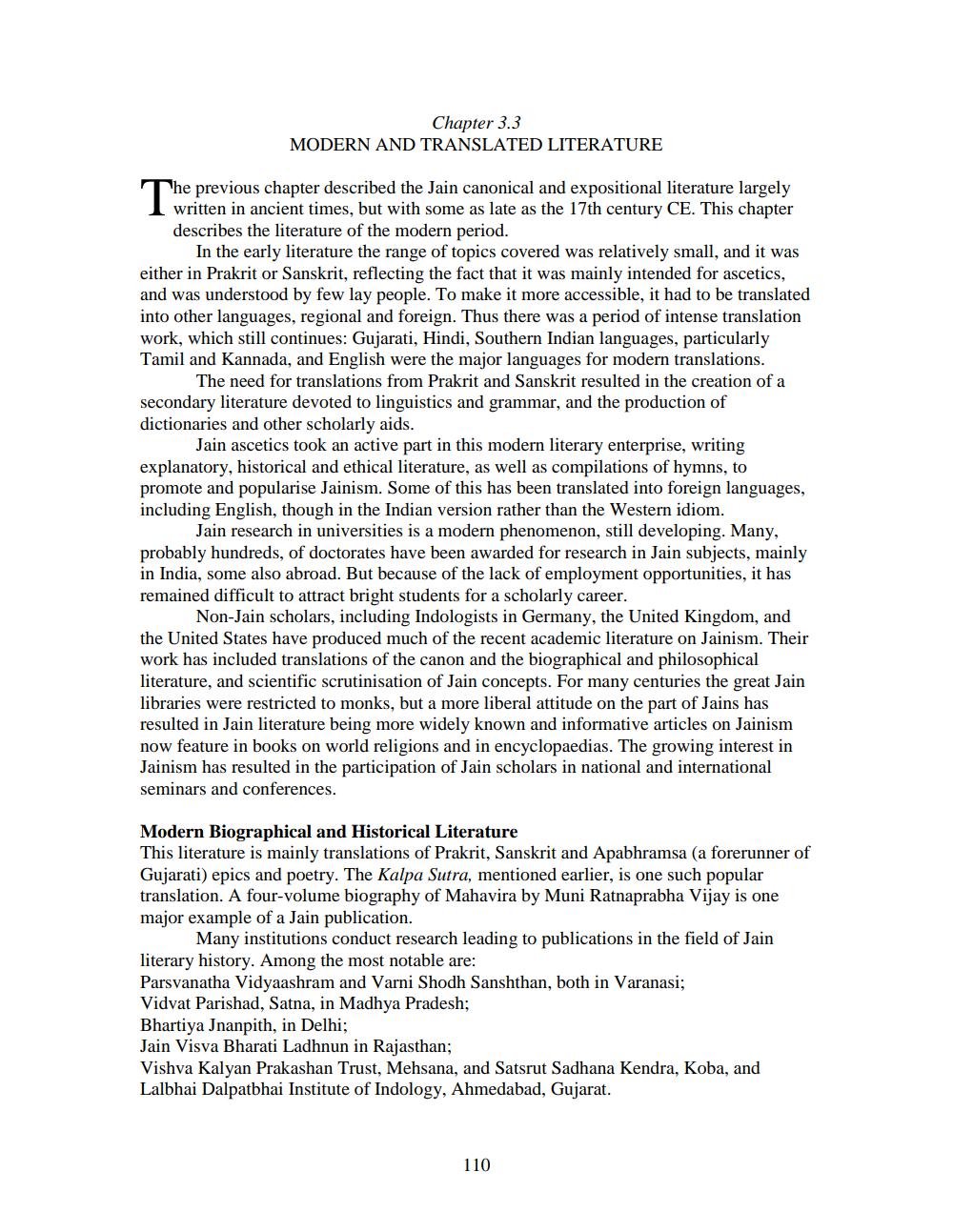________________
Chapter 3.3 MODERN AND TRANSLATED LITERATURE
The previous chapter described the Jain canonical and expositional literature largely I written in ancient times, but with some as late as the 17th century CE. This chapter describes the literature of the modern period.
In the early literature the range of topics covered was relatively small, and it was either in Prakrit or Sanskrit, reflecting the fact that it was mainly intended for ascetics, and was understood by few lay people. To make it more accessible, it had to be translated into other languages, regional and foreign. Thus there was a period of intense translation work, which still continues: Gujarati, Hindi, Southern Indian languages, particularly Tamil and Kannada, and English were the major languages for modern translations.
The need for translations from Prakrit and Sanskrit resulted in the creation of a secondary literature devoted to linguistics and grammar, and the production of dictionaries and other scholarly aids.
Jain ascetics took an active part in this modern literary enterprise, writing explanatory, historical and ethical literature, as well as compilations of hymns, to promote and popularise Jainism. Some of this has been translated into foreign languages, including English, though in the Indian version rather than the Western idiom.
Jain research in universities is a modern phenomenon, still developing. Many, probably hundreds, of doctorates have been awarded for research in Jain subjects, mainly in India, some also abroad. But because of the lack of employment opportunities, it has remained difficult to attract bright students for a scholarly career.
Non-Jain scholars, including Indologists in Germany, the United Kingdom, and the United States have produced much of the recent academic literature on Jainism. Their work has included translations of the canon and the biographical and philosophical literature, and scientific scrutinisation of Jain concepts. For many centuries the great Jain libraries were restricted to monks, but a more liberal attitude on the part of Jains has resulted in Jain literature being more widely known and informative articles on Jainism now feature in books on world religions and in encyclopaedias. The growing interest in Jainism has resulted in the participation of Jain scholars in national and international seminars and conferences.
Modern Biographical and Historical Literature This literature is mainly translations of Prakrit, Sanskrit and Apabhramsa (a forerunner of Gujarati) epics and poetry. The Kalpa Sutra, mentioned earlier, is one such popular translation. A four-volume biography of Mahavira by Muni Ratnaprabha Vijay is one major example of a Jain publication.
Many institutions conduct research leading to publications in the field of Jain literary history. Among the most notable are: Parsvanatha Vidyaashram and Varni Shodh Sanshthan, both in Varanasi; Vidvat Parishad, Satna, in Madhya Pradesh; Bhartiya Jnanpith, in Delhi; Jain Visva Bharati Ladhnun in Rajasthan; Vishva Kalyan Prakashan Trust, Mehsana, and Satsrut Sadhana Kendra, Koba, and Lalbhai Dalpatbhai Institute of Indology, Ahmedabad, Gujarat.
110




